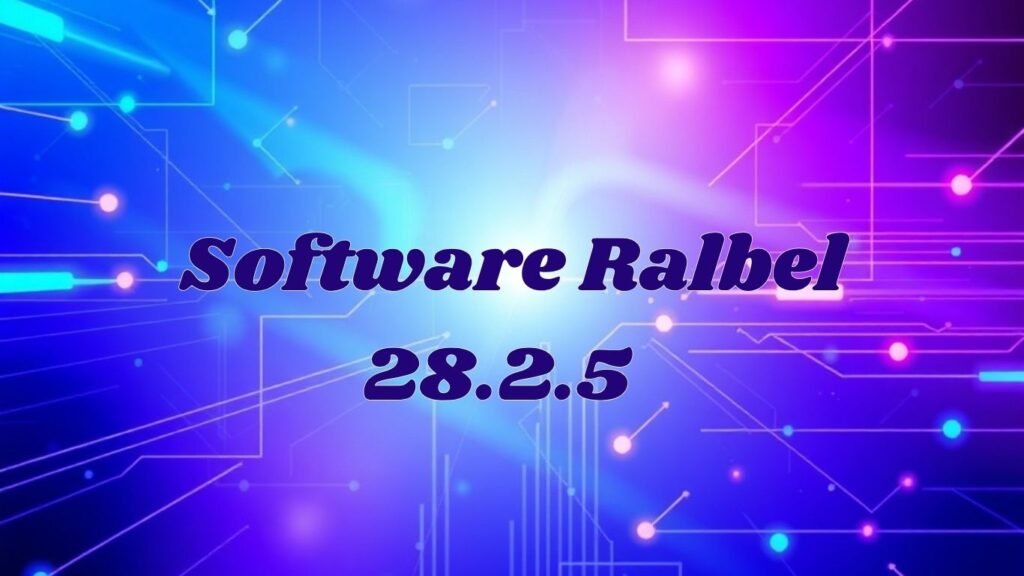Introduction
The Ralbel 28.2.5 software update promised performance improvements and new features, but many users have encountered unexpected issues that disrupt workflows and create frustration. Common problems include crashes, high memory usage, slow performance, and conflicts with plugins or system configurations. These challenges can affect both individual users and organizations, impacting productivity and data security.
This article offers a comprehensive, step-by-step guide to understanding and resolving Ralbel 28.2.5 issues. It covers the most common symptoms, possible root causes, and effective troubleshooting strategies. Additionally, we provide advanced tips for power users, preventive measures to avoid future problems, and answers to frequently asked questions. Whether you’re a casual user or an IT administrator, this guide will help restore stability and ensure a smoother Ralbel experience.
Understanding the Ralbel 28.2.5 Issue
The Ralbel 28.2.5 update has introduced several recurring problems across different environments. Users have reported the following symptoms:
-
Application crashes or freezing during regular operations.
-
High CPU or memory usage, indicating potential memory leaks.
-
Slow performance when handling large datasets or complex workflows.
-
Plugin or integration conflicts, where previously working extensions fail.
-
Installation failures or corrupted files, often resulting from interrupted updates.
-
Permission issues, such as inability to write to certain directories.
These issues are not limited to a single operating system; Windows, macOS, and Linux users have all reported problems. Understanding these symptoms is the first step toward resolving them.
Possible Causes of Ralbel 28.2.5 Problems
Identifying the underlying causes can make troubleshooting much easier. The most common reasons for Ralbel 28.2.5 issues include:
-
Code Changes
Updates in 28.2.5 may have altered memory management, background processes, or initialization routines, causing incompatibility with older workflows. -
Memory Leaks
Continuous increase in memory usage suggests that the software may not be properly releasing resources after tasks are completed. -
Incomplete or Corrupted Installation
Leftover files from previous versions or interrupted updates can prevent the software from running correctly. -
Operating System or Driver Conflicts
Certain OS versions or drivers may not fully support the changes introduced in the update. -
Plugin or Third-Party Conflicts
Extensions or integrations may be incompatible with the new version, leading to errors or crashes. -
Permission or Configuration Errors
Misconfigured settings or insufficient permissions can block the software from accessing required files.
Step-by-Step Troubleshooting Guide
Follow these steps to resolve Ralbel 28.2.5 issues:
-
Restart and Prepare
Close all other applications and restart your computer to clear temporary states. -
Verify System Requirements
Ensure your system meets Ralbel 28.2.5’s requirements. Update your operating system, drivers, and any necessary runtime libraries. -
Clean Reinstallation
-
Uninstall Ralbel completely.
-
Remove leftover files from previous installations, including configuration and cache folders.
-
Reboot your computer.
-
Install the latest version from a reliable source.
-
Run the installer with administrative privileges.
-
-
Disable Plugins
Launch the software without any plugins or extensions. If it runs smoothly, enable them one at a time to identify the problematic plugin. -
Monitor Resource Usage
Check CPU, memory, and disk usage while running the software. Increasing usage over time may indicate a memory leak. -
Review Logs
Examine log files in the software’s installation or temp directories for recurring error messages that can indicate the source of the problem. -
Roll Back if Necessary
If stability cannot be achieved, consider downgrading to a previous version, making sure to back up all settings and data. -
Contact Support
Gather system information, error messages, and screenshots to provide detailed information to technical support.
Advanced Tips for Power Users
-
Use a Virtual Machine: Test updates in a sandbox environment to isolate problems.
-
Diagnostic Tools: Use memory and performance monitoring tools to detect leaks and inefficiencies.
-
Reset Configuration: Backup and reset configuration files to default, then reintroduce custom settings gradually.
-
Automate Maintenance: Clear cache and temporary files regularly and restart the software periodically if resource usage rises.
Preventing Future Issues
-
Test Updates Before Deploying: Use non-critical systems or virtual machines for testing new versions.
-
Backup Regularly: Always back up configuration files and data before updates.
-
Stay Informed: Follow official announcements and user communities for updates on bugs or hotfixes.
-
Update Dependencies: Keep drivers, plugins, and runtime libraries current.
-
Use Feature Control: Disable experimental or optional features when updating to minimize risk.
Read More: Understanding the “Titsintps” Trend: Meaning and Uses
Conclusion
The Ralbel 28.2.5 update has posed challenges for many users, ranging from crashes to plugin conflicts and high memory usage. However, these problems can be managed and resolved through careful troubleshooting, including verifying system compatibility, clean installation, disabling plugins, monitoring resource usage, and consulting logs. Advanced users can further protect stability through diagnostic tools and controlled testing environments.
By following preventive measures—such as testing updates, backing up data, and staying informed about software changes—users can minimize disruption and ensure a reliable Ralbel experience. Consistent monitoring and proactive management are key to maintaining performance and avoiding similar issues in future updates.
FAQs
-
Why is Ralbel 28.2.5 crashing on my system?
Crashes are often caused by memory leaks, plugin conflicts, configuration errors, or incomplete installation. -
Can I downgrade to an earlier version if 28.2.5 is unstable?
Yes. Make sure to back up all data and settings before reverting to a previous version. -
How do I find Ralbel log files?
Log files are usually located in the installation folder or a temporary directory. They can help identify recurring errors. -
Will disabling plugins fix Ralbel 28.2.5 issues?
Disabling plugins can resolve conflicts. Enable them one at a time to identify any problematic extensions. -
Is there a patch to fix 28.2.5 stability problems?
Developers often release minor updates or patches to address bugs and compatibility issues. Stay updated to receive fixes.










